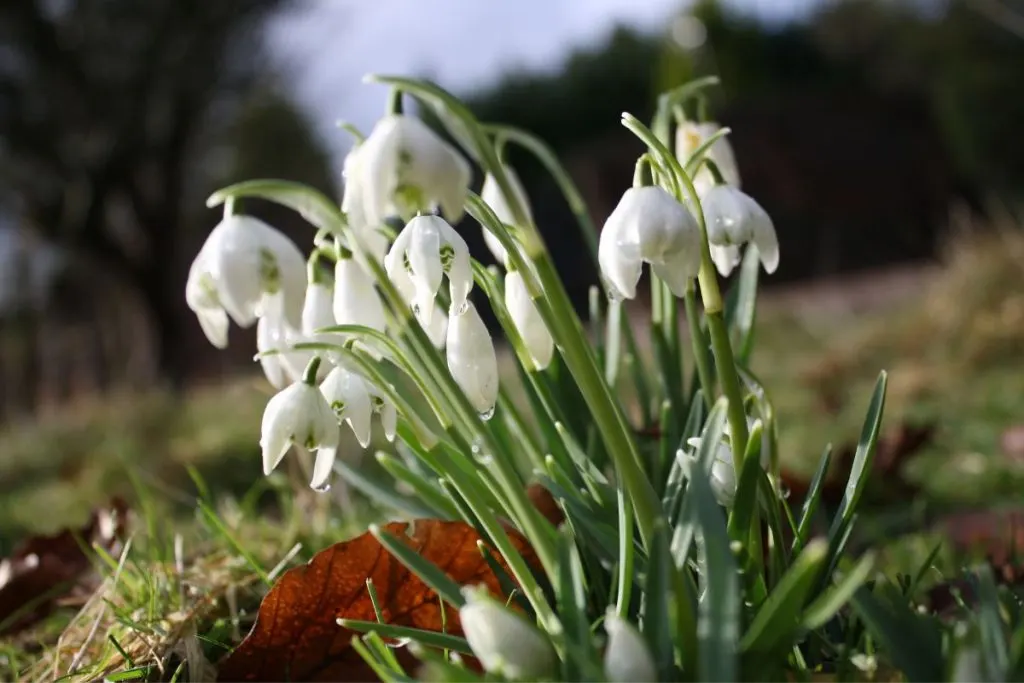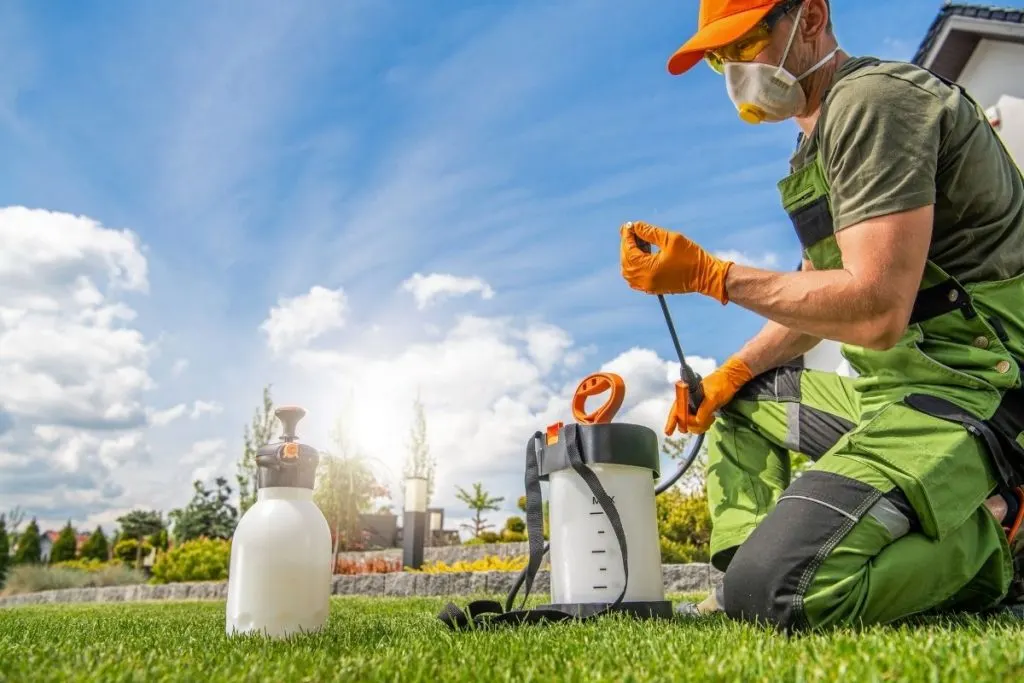The flower of Sandankwa Viburnum is unipolar or bisexual, and to perform pollination, another variety of the plant must be available.
When the flowers are fertilized, they develop into fruits that ripen during the fall. In doing so, they change color and look very decorative.
The color of the fruit depends on the type and time of ripening and can be yellow, green, blue, purple, pink, red, or dark black. Fruits are the main source of food for birds and other animals for whom this plant is a real treat during the winter.
Today, we’re going to talk about its care guide, features, and much more.
Coffee is set? Let’s start then.
Are Sandankwa Viburnum Good Indoor Plants?

These plants are amazing outdoor plants. We won’t lie to you…But when they’re grown indoors, they can also be good plants, but not such as grown outdoor plants.
Morning light, sun, outdoor temperatures, and everything else that’s outside, are just much better for these plants. Its dark green leaves need outdoor conditions.
More About Lovely Viburnum Suspensum

Viburnum is a genus of ornamental shrubs and hedges that is becoming increasingly popular in landscaping. This genus is also known as Viburnum Suspensum.
The genus includes more than 170 species that beautify backyards with their beautiful round flowers. And when they bloom, the beautiful greenery is still a decoration, all year round.
Viburnum can be grown as a single shrub or as a hedge with which you can fence the yard and hide it from view. It has an attractive appearance all year round. The bush can stand in the middle of the yard, and its size and appearance will not go unnoticed.
Let’s talk about its care guide now and what should you do in case you get one!
Lighting Conditions For Sandankwa Viburnum

Partial sun and partial shade are what these dark brown stems and white flowers like the most! Especially when growing outside, direct sunlight (full sun) can kill this plant! It is very sensitive to bright direct sunlight, so be careful!
If growing inside, the best choice you can make is to place it on the west window! Most plants that are white prefer these light conditions. In late winter, when root growth is also “bigger”, you can sometimes place it on the direct sun, but only morning sun.
Watering Viburnum Suspensum

This small tree doesn’t have a hard watering schedule that you strickly have to stick on to. You can water it regularly thought the day. When you notice the soil is dry, pour some water in, but don’t overdo it in those moments.
Too much water, as with other plants too can cause root rot, it kills nutrients faster and sometimes just doesn’t make sense. Moisture is fine, but too much moisture isn’t.
Another topic on watering: How often to water pepper plants?
Soil Types For Sandankwa Viburnum

Evergreen Viburnum likes organic matter with a high percentage of clay-type of soil. Sandy soil is a big no, but black soil can work as well. When you combine it with other good conditions, your plant will just grow and keep growing!
When repotting, new soil isn’t needed. Most nutrients are there and by choosing new soil, you’re losing the good nutrients. Well-drained soil matters!
Choose The Right Fertilizer

Young plants need extra phosphorus for proper root development. Find fertilizer P (the second number in the bag). Apply to plants the recommended amount at the time of planting or at least in the first growing season, in the direction of sticking to the ground.
Choosing the right fertilizing will make your plant grow healthy and constantly. Note this as well: some fertilizers attract bees, so if you notice them, they’re not only doing pollination, they’re attracted to fertilizer composition. You will notice this in summer especially.
How To Propagate Viburnum?

You can spread viburnum from a piece of soft or hardwood. Many plants propagate like this, but learn how to do it on the right plant for you:
- To cut conifers, choose strong branches that are 4-6 inches long.
- If possible, remove the cut in the morning. Remove the leaves from the lower third. For hardwood cuttings, you should choose a strong stem, cut 8-10 inches, remove the leaves from the lower half, and add at least a few knots.
- Fill a small pot with a damp mixture of peat and perlite and make a small hole in the middle of the mixture.
- Soak the stems in vascular hormones.
- Put the cuts in a saucepan.
- Cover the cuttings with a plastic bag or dome and store them in moist soil and indirect light for about 4 weeks.
- Rooting hardwoods can be slow, but it should be done in a few months.
- Check the roots by gently pulling on the plant. If there is resistance, the plant will begin to take root.
- Remove the plastic and place it in indirect light.
- Before planting these perennials in the arrangement, gradually acclimatize to the outside, placing the plants in the sanctuary for a few hours every day, for a week or 10 days.
How To Make A Hedge

Hedges can only be handed over in a more formal, informal way or by cutting them correctly into arbitrary shapes.
In the first two seasons, the tip cuts several times from 2 inches to 6inches. Cutting the top and sides favors bifurcation. The most common mistake people make is to cut the sides at a 90-degree angle. In this case, the upper risers hide the bottom, opening the canopy of the legs.
It is best to cut the sides at an angle so that the floor shines. This ensures a healthy and compact growth at the bottom of the bush.
Do These Plants Bloom In Early Spring?

These plants always bloom in early spring. You can’t rush its blooming season and time with fertilizers or anything else. Early spring and sometimes, just sometimes, middle spring is their growing time.
Are These Container Grown Plants?
These plants don’t have to be grown in containers to grow healthily and well, they can grow just fine in the soil as well. I know both cases when they are amazing yard plants.
If you want your plants to be good healthy plants, it doesn’t depend on the pot, container, or anything else. It is all in your care guide!
Planting Viburnum Sandankwa

Before planting, measure the length and width at which you want to plant Viburnum (if you are going to plant it as a fence).
It will depend on the number of seedlings you need to get, but also the final choice of species. Namely, some species will form a more lush shrub, some taller, and some wider.
If you are planting a hedge next to an existing one, consider keeping a distance as this will make it easier to maintain both fences.
Planting Time And Soil Preparation For Planting

All species of this genus are planted in the autumn months from seedlings previously grown in pots or pots. For planting, it is necessary to dig a hole that is five times larger than the size of the jar in which the seedling grew.
When planting, the hole at the bottom is filled with a mixture of compost, soil, and organic fertilizer. Remove the seedling from the jar and shake the root with a rake.
Since the root is jar-shaped, it needs to be slightly loosened to allow the root shoots to separate and release. The root thus prepared will be easier to receive and take root.
Pruning And Shaping

Since it is grown as a shrub or hedge, and in some cases as a tree, proper maintenance and care are required. For all shrubs and hedges, pruning is important.
Shrubs are pruned before the vegetation begins, and then it is necessary to remove all dry and damaged branches. Some branches can suffocate the bush, so they also need to be removed. To maintain the bushy form, remove and fade shoots also by pruning after flowering.
It is shaped in the shape of trees by choosing the best quality branch during the first year of growth and tying it to support. Shoots coming from the head of the branch should also be removed during the growing season.
Pests Of Sandankwa Viburnum

A small, wingless, dark white, soft insect that forms a layer of wax powder. They have a part of the mouth that pierces / sucks, which absorbs the juice of plant tissue.
The pips often look like small pieces of cotton, gathering on the branches of leaves and stems. It attacks other plants. The chicks tend to move until they find a suitable place to feed, after which they will hang out and eat in the colony.
Rain can weaken the plants and cause them to lose their leaves and yellow leaves. They also produce a sweet substance called honey juice that can cause an unpleasant mold called moth mold on the black surface.
Prevention and Control: Isolate infected plants from uninfected plants. Help reduce the population of natural enemies such as ladybugs in your garden.
Wrapping It Up

You’re welcome, ladies! I know you can’t wait for tomorrow to go and buy some seeds for this amazing plant.
I’m sure you have some extra space in your garden for this lovely plant. Its flower color will surely fit in any yard you won’t have problems with that part at least.
Your landscape design can just be prettier! Due to avoid root ball damage, and other potential problems, make sure to read this care guide a few times more!
Your yard can soon be like a Japanese island’s yard, wouldn’t that be nice?
Until next time darlings!

